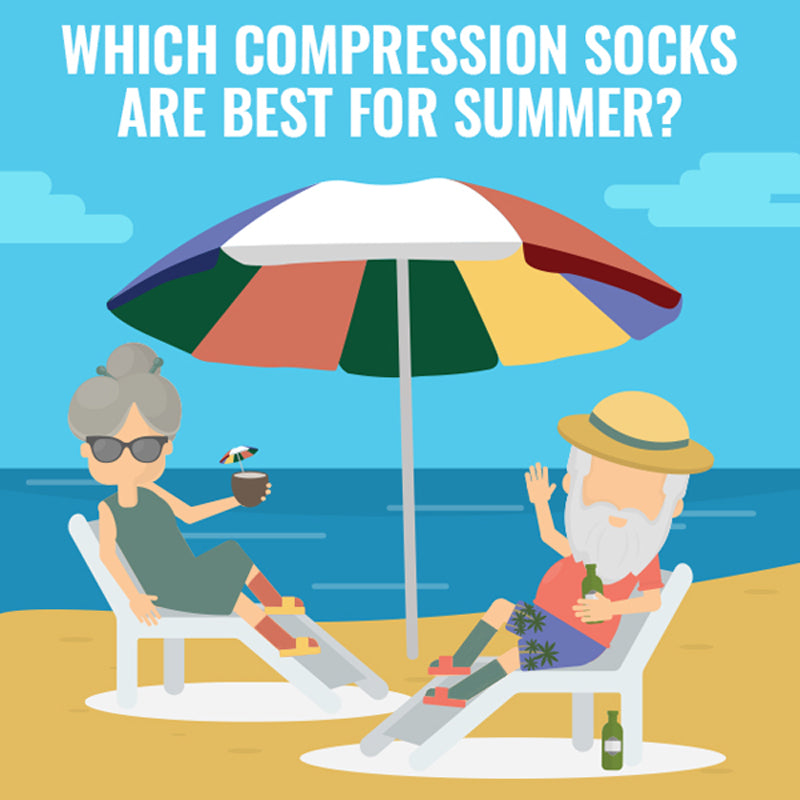1-877-545-8585
1-877-545-8585


This blog was originally posted in July of 2014, but it’s a question we are asked often at this time of year, so we felt a refresh and re-post was in order.
It’s summertime, which means pools are open, and people are fleeing to the beach every weekend to escape the heat. For those of us that have to wear compression stockings or compression armsleeves from morning to night, this can be a difficult time of year.
I was excited in 2014 to see one of my favorite lymphedema bloggers, Monique at LymphedemaRunner.com, addressing the issue in a blog post*. Monique admits to being self conscious about wearing her stockings to the beach and pool at first, but found strength and inspiration in watching CrossFit Athlete Deborah Cordner Carsen proudly rocking her Elvarex stockings during a Triathlon.
Since finding this blog originally, I've seen more and more posts about swimming, lymphedema and compression. Many men and women find swimming helps alleviate swelling and edema. Kathy LaTour recently posted about her swimming regime to manage the lymphedema in her arm. And, last year, Karen Goeller posted about her excitement in her local pool opening.
Here are the basic FAQs on compression and water activities:
1. You CAN wear your compression stockings in the ocean, lake, pool or other water source. But, all of these environments will be hard on your stockings – causing them to deteriorate more quickly than regular daily use. We recommend setting aside a set of stockings or armsleeves specifically for water activities. These could be an older pair that you’re not worried about destroying, or a less expensive garment that won’t be a huge monetary loss (like Allegro).
2. If you will be submerged completely in water for most of your water excursion, you don’t need your stockings or sleeves. The pressure on your body under water actually replicates what your compression garment does outside of water. If you go without your compression garment, do make sure your affected limb will be under water and put the garment back on quickly after leaving the water. If your affected limb is not submerged in the water, you should be wearing your compression garments.
3. It can be hard to get your compression sleeve or stockings back on after you get out of the pool or ocean because of the moisture on your skin. Recently, I found a message board discussing this - a medical professional had a great suggestion, "A couple of my clients...use the hair dryer in the bathroom on 'medium' (not hot) and it helps get rid of the condensation that is hanging around - they also use just the tiniest amount of talc, on a towel, stroked over the lower leg and back of the knee, so that donning their garments is quicker!" If you're at the beach, you might not have access to a hair dryer, but packing some talcum powder in your beach bag would be a great idea. If it's a problem getting your garment back on at the beach, it's likely best to just swim in it.
4. As always – stay hydrated. Being in the sun at the beach or pool may leave you dehydrated. Pack plenty of water!
Some additional information on water activities and lymphedema can be found on LymphNotes.
Lastly – a few product recommendations. If you have just one affected leg, you might try the Juzo Varin 3511 Thigh w/Hip Attachment and Open Toe – available in 20-30 or 30-40 or 40-50 mmHg. Sigvaris offers a similar option in 20-30 mmHg and 30-40 mmHg in the 862 line. Then - when you're on the water, only your affected leg needs to be covered.
CrossFit superstar Deborah Cordner Carsen recommends the Jobst Elvarex, which is a custom order product.
And – if you’re looking for something that’s very durable and affordable, the Allegro Surgical Weight Line is a great option! Allegro is also available in armsleeves if you're looking for an inexpensive sleeve to swim in.

*The LymphedemaRunner blog is unfortunately no longer active.
{"one"=>"Select 2 or 3 items to compare", "other"=>"{{ count }} of 3 items selected"}